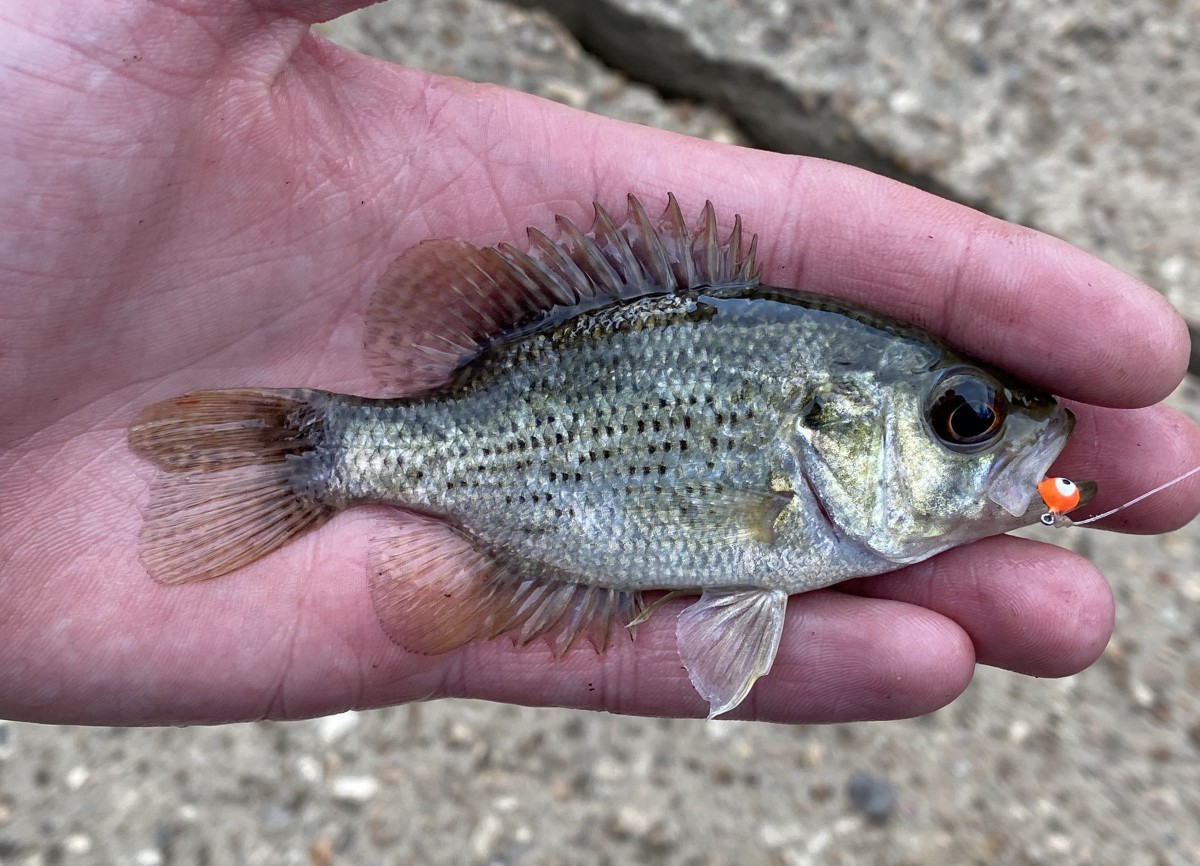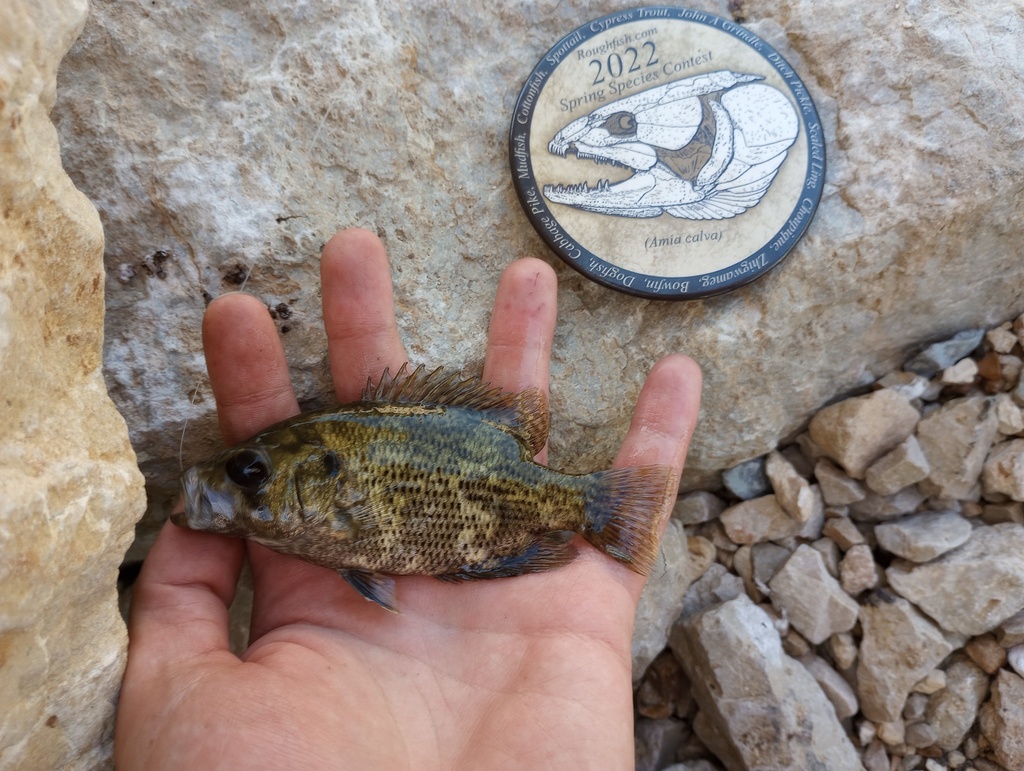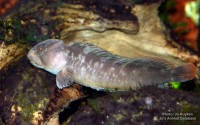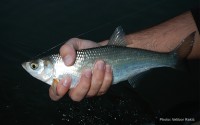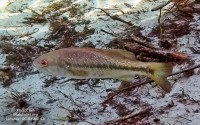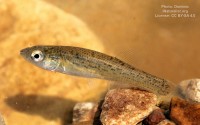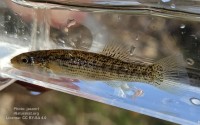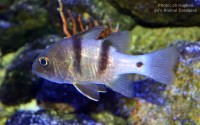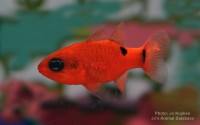Shadow bass
(Ambloplites ariommus)
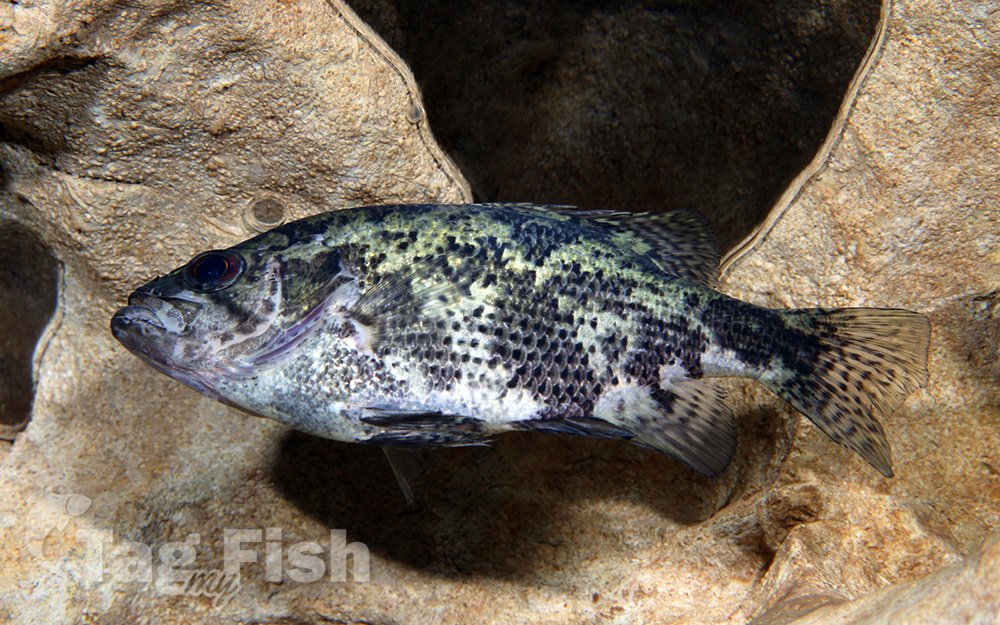
Classification
General data
The shadow bass (Ambloplites ariommus) is a species of freshwater fish in the sunfish family (Centrarchidae) of order Centrarchiformes - Basses. It is endemic to southeastern United States of America.[
The shadow bass, has a lateral line containing 36 to 42 scales. There are 11 spines and 11-12 soft rays in the dorsal fin while the anal fin contains 6-7 spines and 10-11 soft rays.
It has a large mouth with the maxilla at the level of the center of its eye. They are olive to light brown in color and there are frequently 2-4 dark brown vertical bands and blotches along their flanks.
The dorsal, anal and caudal fins are usually transparent to light yellow and are mottled with black and gray. The iris is reddish, and the pupil is deep blue. There is a black band that runs from beneath the eye onto the gill cover. The spots on the scales of the shadow bass are triangular while the similar rock bass has rectangular spots on its scales.
The shadow bass is a medium-sized sunfish that has an average standard length of around 10 centimetres (4.00 in) and a maximum length of 30 centimetres (12.00 in) and weight of 0.45 kilograms (1 lb). Females normally live longer than males, but the males are faster growing and grow larger.
Geographic distribution
The shadow bass\\\\\\\\\\\\\\\\\\\\\\\\\\\\\\\' native range includes the southeastern United States from the Apalachicola River drainage in Georgia to the lower Mississippi basin in Louisiana. The two isolated populations in the St. Francis, Black Arkansas Red, and upper Ouachita River drainages in Missouri and Arkansas in the Ozark regions. In Tennessee, the shadow bass can be found in most drainages south of the Tennessee River. Other river drainages that shadow bass inhabit are Blackwater and Chattahoochee Rivers in southern Georgia and northern Florida. The apparent absence of shadow bass in Black Belt streams is probably the result of low stream flow and poor water-quality conditions during the late summer when temperatures are high. Channelization is a possible factor in the distribution of the shadow bass in Mississippi River systems, but no difference in the distribution of shadow bass was found.
